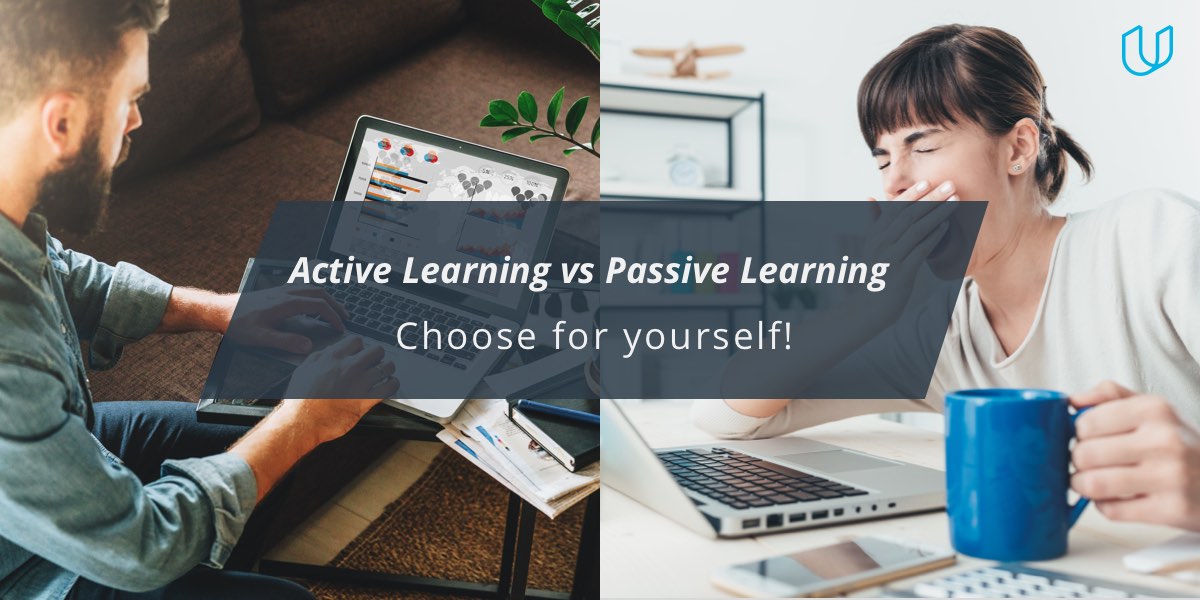We’re all individuals.
All of us have individual career aspirations, goals, and visions for the future. And we have different skills and learning preferences to achieve them. Today, every organization is seeking to give its employees the best possible training to help both them and the company stay current on rapidly evolving technology trends. Employee upskilling programs are no longer a nice perk – they are a must to stay competitive. Organizations must ensure their top talent is up-to-date on trends, new industry developments, and has access to the best technology. That means companies are looking to incorporate the latest and greatest learning tools on the market to make that happen, especially when it comes to developing their next crop of managers.
But unfortunately, new doesn’t necessarily mean better.

Case in point: video learning.
Static video courses have a great deal in common with college lectures. And that’s a problem. According to one study, “Undergraduate students in classes with traditional stand-and-deliver lectures are 1.5 times more likely to fail than students in classes that use more stimulating, active learning methods.”
That’s because it’s passive learning. What’s true for college students is the same for working adults, too. Humans have a preference for active learning.
As education pioneer Eduard Lindeman noted “Adults have a self-concept of being responsible for their own decisions, for their own lives. They resent and resist situations in which they feel others are imposing their wills on them.” That presents a real challenge for adult learning because, according to Lindeman, “the minute adults walk into an activity labeled ‘education,’ ‘training,’ or anything synonymous, they hark back to their conditioning in their previous school experience, put on their dunce hats of dependency, fold their arms, sit back, and say, ‘Teach me.’”
Lindeman was describing passive learning.
So, now let’s apply that idea to videos. By their very nature, one-size-fits-all videos are passive because they have to address a wide range of learning abilities and styles. They’re not individualized. Even good ones that follow the traditional, lecture-style formats are not effective for employees.
Yes, they can provide helpful introductory information. But they won’t cultivate the ability to apply that knowledge or develop skills that employees can use in their jobs and help their businesses. This can be a huge risk, particularly when workers think they know something, but that knowledge isn’t very deep. (Remember the old adage about how a little knowledge can be a dangerous thing?)
That’s why using active learning methods is crucial for true workforce transformation and reskilling. What do we mean when we say “active learning?” It’s when learners engage, apply, and reflect immediately on the knowledge they have gained. When this happens, outcomes are better and the knowledge is retained because workers are applying what they’re learning in ways that help them make better sense of the information. It’s knowledge that’s sticky. It incorporates high-quality content. It’s interactive. And it has instant feedback.
Here are three reasons why active, project-based learning is the key to skills transformation for the future of work:
- It’s applicable across any business context. Enterprise leaders need to consider multiple scenarios when arming their employees with new skills. Active learning methods ensure that knowledge can be applied in more than one context. Once the skills are honed, employees can apply these new capabilities across their organizations. Think of it as adding a new tool to the company’s shared toolbox that can be utilized in many scenarios.
- Personalization is key to skills development. Organizations must deliver individualized, continuous learning experiences through on-the-job and formal training programs. That’s the way employees develop critical skills. Project-based learning is where employees actively explore real-world problems and challenges. Instead of just listening to lectures, studying, and taking tests, students apply the material they’re learning to solve problems. It’s learning by doing.
- Learners are conditioned to perform tasks independently. One key principle of active learning is practice. And while practice doesn’t always make perfect, it certainly makes knowledge more permanent. As one learner in Udacity’s AI Nanodegree program stated: “You’re not taught what to do. You’re taught how to think.” Once employees have expertise on a particular subject, they can make better decisions while helping execute business strategies and objectives. They’ll also have the foundation to continue building upon their skillset as they move up the ranks of their organization. That drives long-term value for the company.
Passive learning through video alone is insufficient and incomplete when organizations are reskilling their employees. This one-way transfer of information falls short. Organizations must be able to deliver personalized, continuous learning experiences through on-the-job and formal training programs to help employees develop critical skills.
Every industry in every part of the world is coping with the ceaseless waves of technical disruption that show no sign of abating. Companies that retain and develop great talent are better equipped to ride these waves to success. Companies that don’t will be swamped – paralyzed by a growing skills gap and a revolving-door workforce.
Top talent already exists within your organization. Invest in your employees and create a strategy to help them (and you) become better. Find out how you can get started.





